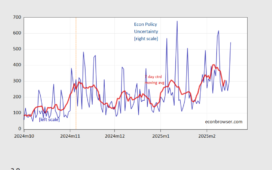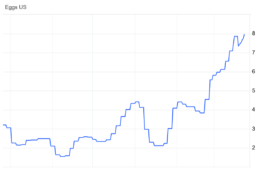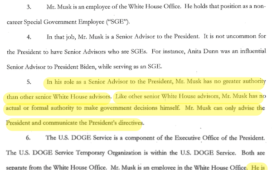There are some events whose likelihood of occurrence is independent of beliefs about this likelihood. It may or may not rain during the opening ceremonies of the Paris Olympics, but the probability that it will is unaffected by whether people consider the possibility likely or unlikely.
Elections are different. If a perception starts to take hold that a candidate is losing viability, this will depress morale, fundraising, volunteer effort, and turnout among supporters, and thus increase the objective probability of a loss. Pessimism about a candidate can become a self-fulfilling prophecy.1
This is why campaigns tend to release internal polls selectively, circulating those showing their candidate ahead or closing the gap and suppressing those that interfere with this narrative. It is also why observers tend to be skeptical of internal polls, and even to interpret the failure of a campaign to release a poll for an extended period of time as a sign of bad news.
When a campaign is facing an existential crisis, it becomes strategically important for the candidate and committed allies to project a very high level of confidence in recovery. This is the script we have seen play out over the past few days. In his letter to members of congress, President Biden asserted that he could not and would not step aside, that any “weakening of resolve or lack of clarity” would only benefit his opponent, and that that it was time for the speculation to end. He made similar claims in a call with major donors and fund-raisers, and in a media appearance.
Several surrogates have echoed these sentiments, none more spectacularly than Representative Ocasio-Cortez, who insisted that the matter is now closed (screenshot below, link to video here):
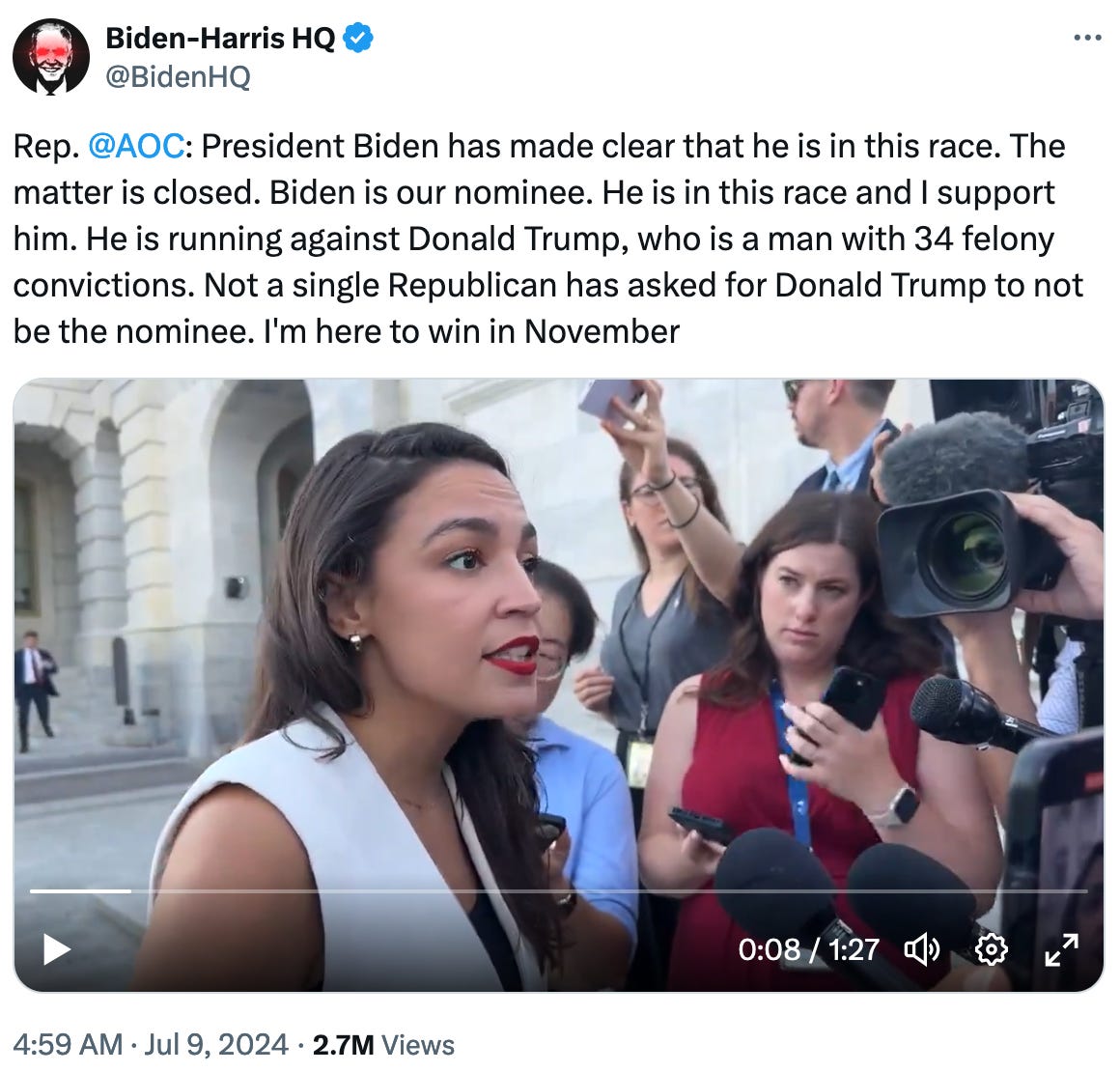
This strenuous effort by the president and his allies did indeed shift beliefs about the his prospects, but only temporarily:
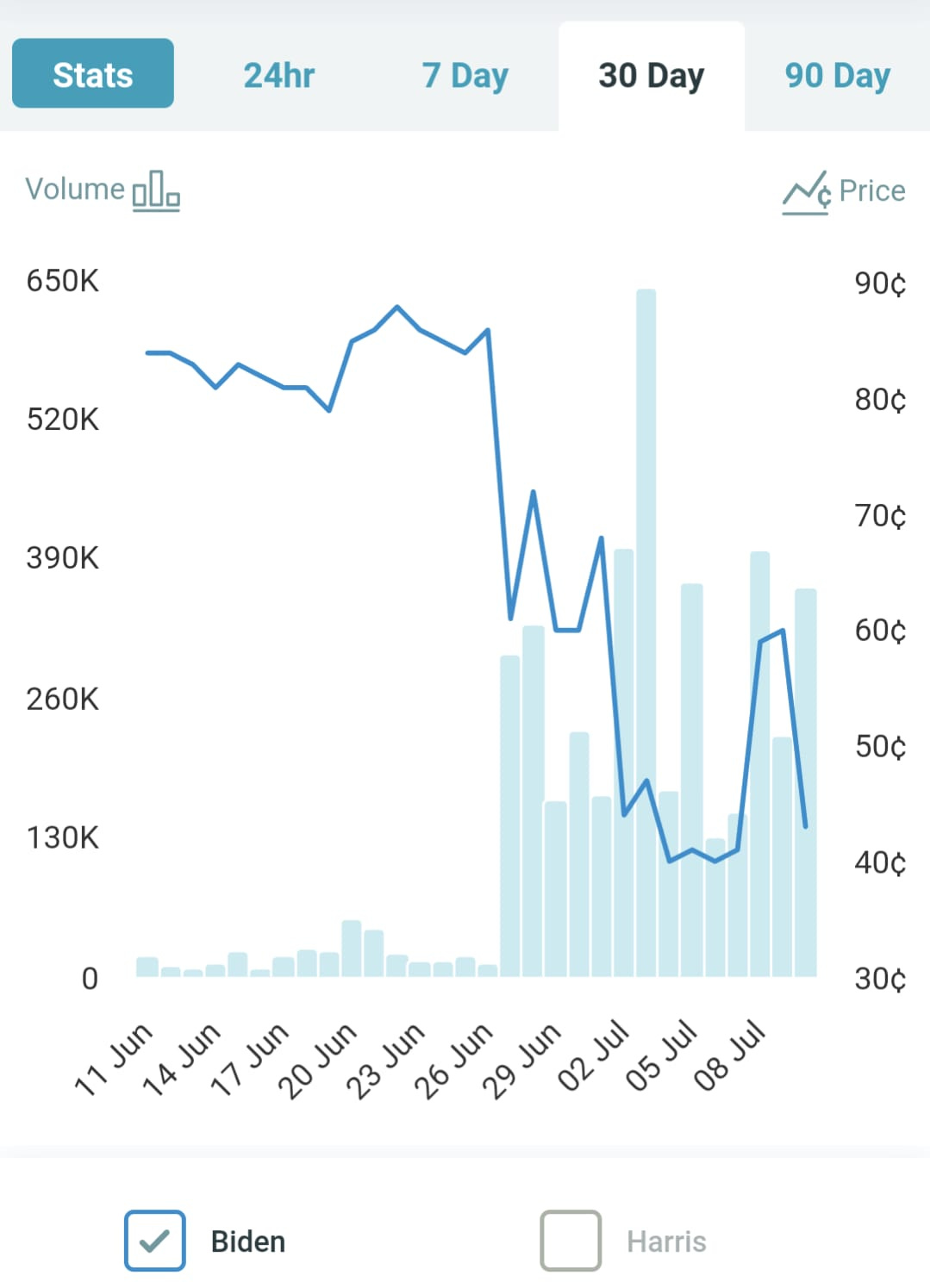
The figure above shows daily closing prices for the Biden nominee contract on PredictIt over the past month. Four phases can be identified. Prior to the debate the implied likelihood that Biden would be the nominee was hovering at around 85 percent. This dropped to about 60 during the debate itself, and then fell further to 40 over the next few days. The attempt to persuade the electorate that there was no possibility of Biden stepping aside led to a recovery in prices back to an implied probability of about 60, but this held for just a couple of days. As of this writing, the price is as low as it has ever been:
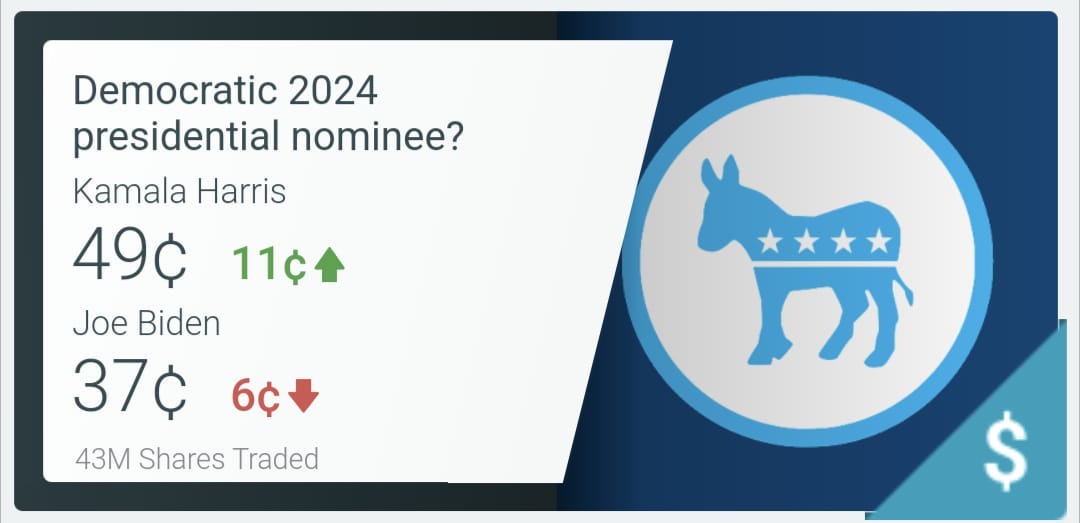
So we are faced with two inconsistent narratives. The president and his committed supporters insist that there is no prospect of his stepping aside, that the matter is closed. Markets suggest that a change of nominee is more likely than not, and that Kamala Harris has a better chance of contesting the November election than Biden himself.
How do we make sense of this? Statistical models cannot help us figure out a probability, since they are unable to cope with uncharted waters and are still assigning zero probability to the event that someone other than Trump or Biden will win the November election.
It helps to realize that the president currently has only two options—he can either start preparing to step aside and signal that he is doing so, or proclaim with supreme confidence that such a situation could never arise. It is inconceivable to me that his supporters really do believe that the matter is closed. But they have no choice. Leaving the door open even slightly would be fatal for the campaign, as a very public and chaotic battle over the path ahead will erupt.
Hence the president and his supporters will continue to make strenuous effort to convince donors, delegates, and the electorate at large the that there is absolutely no chance of his dropping out of the race. Perhaps this will work, and the probability that he will prevail will creep back up to pre-debate levels over time. But what markets are saying at the moment is that the effort will very likely fail.
In public-facing messages, the campaign has to keep projecting the utmost confidence. But behind closed doors, it would be wise for party leaders, starting with the president himself, to begin planning for an orderly transition. This must be done even if they hope that the plans will never need to be implemented, and even if the plans must—for strategic reasons—be kept hidden from the public.


